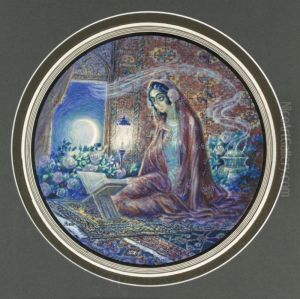Antoin Sevrugin Paintings
Antoin Sevruguin was a pioneering photographer who is most renowned for his depictions of Persian society at the turn of the 20th century. Though his exact birth date is not well-documented, he is believed to have been born in 1830 in the Russian Empire, in what is now Georgia. His father was a Russian diplomat, and his mother was of Armenian descent. Sevruguin was one of the few photographers of his era to capture the diverse social fabric of Iran, ranging from the everyday life of the people to the grandeur of its palaces.
In the 1870s, Sevruguin moved to Tehran, Iran, where he established his photographic studio. His work was characterized by a keen eye for composition and a sensitivity to the cultural nuances of his subjects. Unlike many photographers of the time who were primarily concerned with the exotic and orientalist aspects of Eastern cultures, Sevruguin showed a genuine interest in the Iranian people and their way of life. His photographs provide a valuable historical record of Iran during the Qajar era, including portraits of royalty, scenes of public life, and images of architecture and landscapes.
Sevruguin was known for his technical proficiency, innovative use of lighting, and the ability to convey a compelling narrative through his images. He was a meticulous craftsman, often retouching his negatives to remove or add elements that would enhance the final print. This attention to detail did not go unnoticed, and he gained international recognition for his work. His photographs were exhibited in Europe and earned him awards, cementing his reputation as one of the leading photographers of his time in the Middle East.
Despite the widespread appreciation of his work, the 1908 bombardment of Tehran by the constitutional revolutionaries destroyed much of Sevruguin's studio and many of his negatives. Nevertheless, he continued to work until his death in 1933. Antoin Sevruguin left behind a legacy that transcends mere documentation; his photographs are a window into a world that has undergone significant transformation, and they remain a testament to the rich cultural heritage of Iran. Today, his works are held in various museum collections and archives, and continue to be studied and appreciated for their historical and artistic value.
